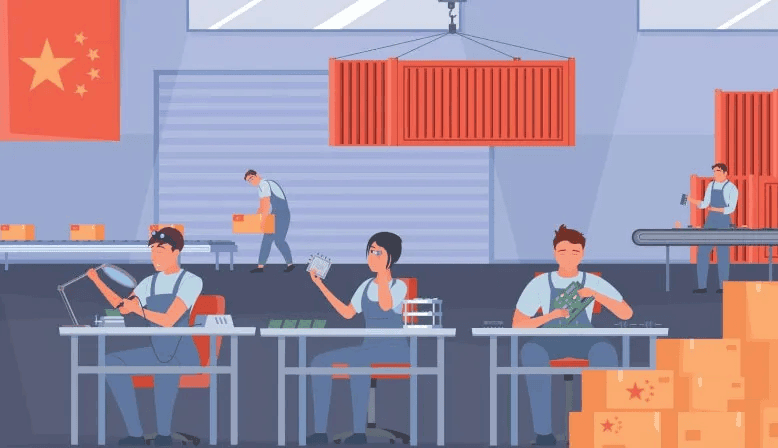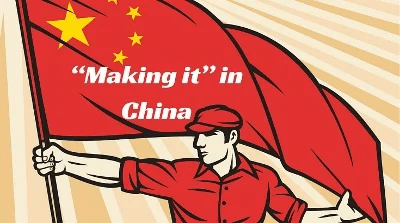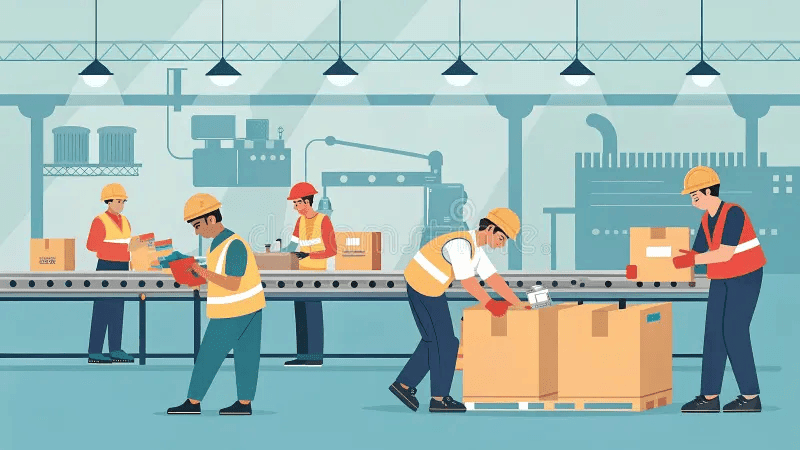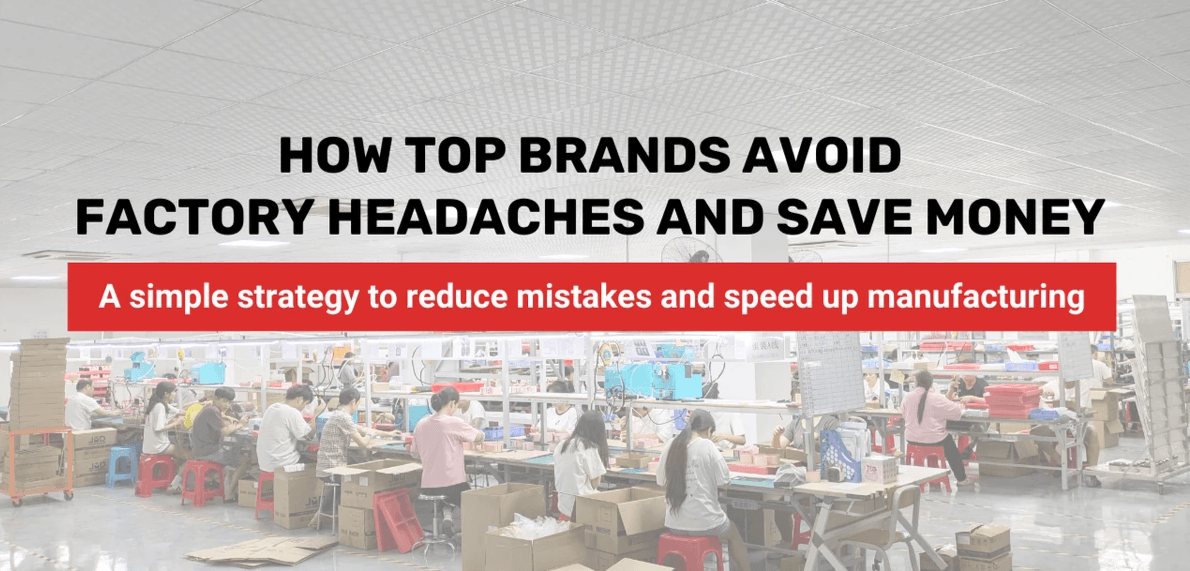Introduction: The Game-Changing Factory Visit Strategy (That Nobody Wants to Tell You About)
In the rapidly evolving world of global sourcing, successful importers know one secret that separates winners from losers: boots-on-the-ground factory visits. As someone who's navigated the complex landscape of China imports for over 7 years, I'm pulling back the curtain on why physically visiting manufacturing facilities isn't just recommended—it's essential, like oxygen or caffeine for morning meetings.
Think your supplier's beautiful website and prompt WeChat responses mean everything's perfect? That's adorable. Let me introduce you to reality.

The Hidden Risks of Remote Sourcing (Or: How to Lose Money While Sitting Comfortably at Home)
Imagine investing thousands of dollars in a product, only to discover:
- Your "manufacturer" is actually a trading company with an impressive collection of other people's product photos
- Quality is nowhere near your expectations (think "dollar store" when you ordered "luxury boutique")
- Communication breakdowns cost you time and money (and possibly a few strands of hair/your sanity)
This nightmare scenario happens more often than you'd think—about as frequently as people regret late-night online shopping decisions. But unlike that impulse-purchased vegetable spiralizer collecting dust in your kitchen, this mistake can bankrupt your business.
8 Compelling Reasons to Visit Chinese Factories in 2025 (Because Pictures of Factory Buildings Can Be Downloaded From Google)
1. Uncover the Real Manufacturing Expertise (Or Lack Thereof)
🔍 Pro Tip: Not all factories are created equal. Many will quote on products they've never produced—and never intend to produce themselves. It's like claiming you can perform heart surgery because you've watched every episode of Grey's Anatomy.
By visiting, you'll quickly distinguish between:
- Genuine specialists (who actually know what they're doing)
- Jack-of-all-trades traders (who know a guy who knows a guy)
- True manufacturing experts (the unicorns of global sourcing)
Red Flag Alert: If a factory can't clearly demonstrate their core competencies, walk away faster than you would from someone trying to sell you oceanfront property in Arizona.
What You Might Discover: "Yes, we make electronics" could mean anything from sophisticated circuit boards to plugging in Christmas lights to check if they work.
2. Quality Assessment Beyond Emails and Samples (Because Anyone Can Take One Good Photo)
Seeing is believing. A factory visit reveals:
- Worker skill levels (are they craftspeople or were they hired yesterday?)
- Production line organization (sophisticated automation or "move this thing over there" chaos)
- Quality control processes (actual testing or just a quick glance and a thumbs-up)
- Company culture and commitment (passionate professionals or "it's just a paycheck" energy)
Pro importers know: The environment speaks volumes about potential product quality, like how a restaurant's bathroom cleanliness predicts food quality. If their quality control department consists of one person with failing eyesight, prepare accordingly.
Reality Check: That perfect sample they sent you? It was likely hand-crafted by their most skilled worker, possibly under direct supervision from three managers. Your actual order will be made by whoever shows up for work that day.

3. Competitive Intelligence Gathering (Legal Corporate Espionage, If You Will)
Want to know who else they're manufacturing for? A factory visit lets you:
- Verify brand claims (are they really making products for that famous brand, or just the brand's distant cousin?)
- See actual production cartons (nothing reveals the truth like boxes headed out the door)
- Research competitor products (without awkwardly following them around trade shows)
- Understand market positioning (are you getting the premium line or the "good enough" version?)
Sneaky Tactic That Actually Works: Casually stroll past their shipping area. Those labels tell stories more honest than most dating profiles.
4. Determine Your Strategic Importance (Or: Finding Out If You're Their VIP or Their "Who?")
Size matters in manufacturing relationships. During your visit, assess:
- How your order volume impacts their priorities (are you their biggest fish or plankton?)
- Communication responsiveness (do managers appear when you arrive, or are you shown around by the intern?)
- Potential for long-term partnership (are they investing in the relationship or just tolerating you for a quick profit?)
Hard Truth: If your order is smaller than their minimum order quantity and they accepted it anyway, you're either getting exceptional service or exceptional disappointment. Visit to find out which.
5. Expansion Insights and Production Capacity (Because "We Can Make Anything" Often Means "We Will Try")
Factory growth tells a story. Look for:
- New equipment investments (or equipment old enough to vote)
- Expansion signs (construction or cobwebs)
- Potential production constraints (one machine making everything is not a good sign)
- Training and workforce development (or the "figure it out yourself" approach)
What to Watch For: Empty production lines might mean efficient scheduling or desperate need for orders. Only a visit tells you which scenario you're facing.
Capacity Claims vs. Reality: "We can produce 100,000 units monthly" might mean "if everything goes perfectly, which it never has."

6. Deep Dive into Production Methods (Because "Proprietary Process" Could Mean "We Wing It")
Critical questions to explore:
- Manufacturing technologies used (state-of-the-art or state-of-the-1990s?)
- Material storage practices (climate-controlled warehouse or "hope it doesn't rain through the roof")
- In-house testing capabilities (sophisticated equipment or "it looks good to me")
- Quality control mechanisms (systematic processes or crossing fingers)
Enlightening Moment: Watching workers actually handle materials tells you more than a thousand perfect sample photos ever could.
7. Packaging: The Silent Quality Killer (That Most Importers Completely Ignore)
Most importers overlook packaging, but it dramatically impacts:
- Defect rates (because even perfect products break in flimsy boxes)
- Product protection (will it survive shipping, or arrive as an expensive puzzle?)
- Shipping costs (poor packaging efficiency = setting money on fire)
- Customer satisfaction (first impressions matter, even for the box)
Horror Story That Could Be Yours: One importer discovered their "waterproof" products were being packaged in water-soluble cardboard only after an entire shipment was ruined in light rain. A factory visit would have revealed this problem before the monsoon season did.
8. Face-to-Face Problem Solving (Or: Why Ten Emails Equal One Conversation)
Nothing replaces direct, in-person communication. Benefits include:
- Breaking down language barriers (body language speaks when translations fail)
- Building trust (humans tend to care more about people they've actually met)
- Resolving complex technical challenges (some things can't be explained via Google Translate)
- Demonstrating your commitment (showing up says more than another email)
Cultural Reality: In many manufacturing cultures, the strength of personal relationships directly impacts product quality. Your visit signals that you care, which might be the difference between "good enough" and "let's make this perfect."

Pro Strategies for Factory Visits in 2025 (Because Showing Up Isn't Enough)
Preparation is Key (Unlike Your College Exams)
- Schedule visits during non-peak seasons (unless you enjoy watching stressed people ignore you)
- Bring a translator if needed (Google Translate can't handle technical terms or convey your disappointed facial expressions)
- Prepare a detailed checklist (or you'll remember the critical questions on the flight home)
- Take comprehensive notes and photos (your memory is less reliable than you think, especially after that baijiu-fueled business dinner)
Technology Enhances Factory Visits (But Doesn't Replace Them)
- Use translation apps for technical details (but watch facial reactions when discussing deadlines)
- Bring portable measuring tools (because "about this big" isn't a specification)
- Take high-resolution photos (your future self will thank you during quality disputes)
- Record key conversations with permission (memory fails, especially regarding verbal agreements about price reductions)
Tech Hack That Works: Create a private photo album categorizing every stage of production you observe. This becomes invaluable when troubleshooting quality issues later.
Conclusion: Your Competitive Advantage (While Others Play Email Tag, You're Building Empires)
In the hyper-competitive world of international importing, factory visits aren't a luxury—they're a strategic necessity, like having brakes on your car or pants in a business meeting. By investing time to understand your manufacturing partners deeply, you'll:
- Minimize risks (because surprises are for birthdays, not business)
- Improve product quality (through the magical power of showing up)
- Build stronger relationships (turns out, suppliers are people too)
- Stay ahead of competitors (who are still trying to source via emoji-filled WeChat conversations)
Remember: Information is power, and nothing beats firsthand experience. No matter how good virtual tours become, they'll never show you what's happening behind the camera or during night shifts.
Ready to Transform Your Import Strategy? (And Stop Wondering Why Your Competitors Have Fewer Grey Hairs)
Start planning your factory visit today. Your future successful product launch depends on it. Your bank account will thank you. Your stress levels will improve. And most importantly, you'll stop having those nightmares where your products arrive shaped like question marks.
Because in the import business, the most expensive flight is still cheaper than the wrong manufacturing partner.